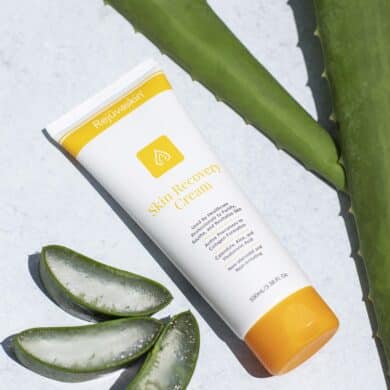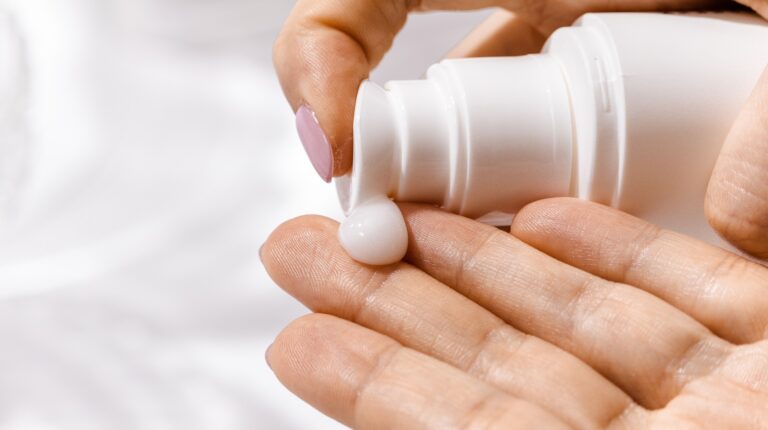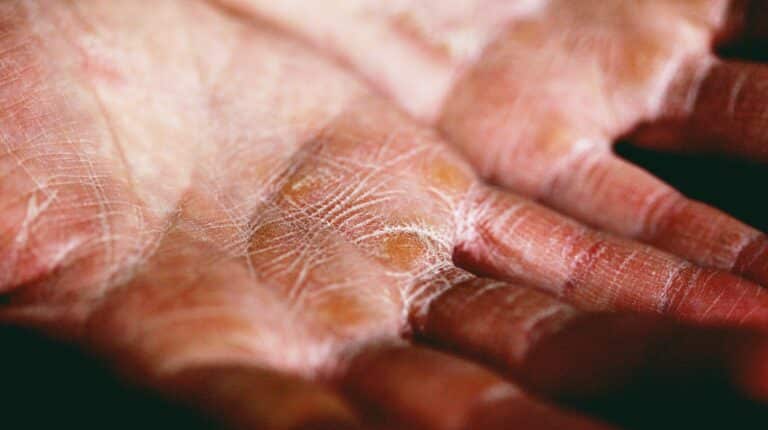
For many living with eczema, topical steroids, hydrocortisone and paraffin creams have long been considered a frontline treatment. But what happens when your skin stops responding—and starts reacting? A growing number of individuals report distressing symptoms after stopping steroids—symptoms that often feel worse than their original skin condition. This reaction is known as Topical Steroid Withdrawal (TSW), sometimes called 'red skin syndrome' or 'topical steroid addiction'.
In this blog, we explore what Topical Steroid Withdrawal is, how it differs from eczema flares, and what gentle, supportive care might look like, especially for those navigating this condition from very young age.
What Is Topical Steroid Withdrawal?
Topical Steroid Withdrawal (TSW) refers to a reaction some individuals experience after discontinuing prolonged use of corticosteroid creams. These symptoms may appear shortly after stopping the medication and can affect even areas of skin where steroids were never applied.
Commonly associated with high-potency or long-term use, TSW is still under-researched but is gaining attention due to rising patient reports and advocacy.

Signs and Symptoms of Topical Steroid Withdrawal
What does topical steroid withdrawal look like? TSW symptoms often differ from a traditional eczema flare-ups. Some of the most reported include:
- Persistent redness or flushing (“red skin syndrome”)
- Deep burning or stinging sensations
- Intense itching or crawling skin
- Weeping, flaking, or shedding
- Swelling, especially around eyes and joints
- Insomnia or anxiety triggered by skin discomfort
- A sensation of tight, paper-thin skin
- Oozing lesions or patches that appear suddenly
These symptoms often cycle, meaning they can appear in waves or flare-ups, lasting days to weeks. People frequently note that areas previously unaffected by eczema can become inflamed during withdrawal.
Is Topical Steroid Withdrawal The Same As An Eczema Flare?
Although TSW and eczema can look similar on the surface—think redness, itching, and dryness—the root causes are quite different.
Eczema flares are often triggered by environmental factors, allergens, or stress, while TSW is a direct response to steroid withdrawal. It can spread to areas that were never previously affected by eczema.
People with TSW frequently describe a burning or stinging sensation and more dramatic skin peeling. These symptoms are often more severe and unpredictable than a typical eczema flare.
Another key distinction is duration: eczema flares often improve with short-term steroid use, whereas TSW typically worsens with continued use and only improves after discontinuation. Understanding this difference can help avoid misdiagnosis and direct individuals toward appropriate care.
How Long Does Topical Steroid Withdrawal Last?
TSW recovery is deeply personal and can vary depending on several factors:
- Type and strength of steroids used
- Duration of use
- Frequency of application
- Affected areas
- Personal skin biology and immune response
For some, symptoms ease in a few months. For others, full recovery may take 12–24 months. However, TSW is temporary, but most individuals who have reported TSW reactions say that their skin problems may persist or recur for months or even years after stopping topical steroids. A common issue is that their skin is more sensitive than before, for example to sunlight or other environmental factors.
Topical steroids can cause skin thinning (atrophy). Mild degrees of thinning may not be noticeable when using topical steroids and, generally, the skin returns to normal in time.
During recovery, the skin may cycle through different phases such as dryness, oozing, flaking, and renewed inflammation before stabilising.
Steroid-Free Cream for Irritated Skin

How to Stop Topical Steroid Withdrawal?
There is no one-size-fits-all treatment for TSW, but here are some trusted approaches:
- Consult with an Expert Dermatologist
Seek professional guidance before tapering steroids. A GP familiar with eczema and TSW can help plan a safe withdrawal strategy and monitor progress. If possible, ask your GP for a referral to a dermatologist with experience in TSW or chronic dermatitis.
- Use Gentle Skincare Products
Opt for fragrance-free, non-irritating moisturiser cream. Avoid harsh cleansers, acidic toners, and exfoliants that could compromise your skin’s natural barrier.
- Choose Soft, Hypoallergenic Clothing
Clothing can irritate sensitive skin. Fabrics that are smooth, tag-free, and moisture-wicking can help reduce friction, especially during sleep. Consider clothing made specifically for eczema-prone skin.
- Track Your Symptoms
Keeping a daily skin log helps identify patterns and assess what triggers or soothes flares. This also supports better communication with your dermatologist and may uncover secondary infections or contact allergies that mimic TSW.
- Embrace Nutritional and Lifestyle Support
A balanced, anti-inflammatory diet rich in omega-3s, probiotics, and antioxidants may support healing. Mindful stress-reduction practices—like meditation, breathing exercises, or journaling—may help soothe the mind-body connection and reduce stress-induced flares.
TSW Support in the UK
Accessing care for TSW in the UK can be a mixed experience. While awareness is growing, not all GPs or dermatologists are familiar with the condition.
Here are a few ways to advocate for yourself:
- Bring photo documentation or a symptom diary to appointments
- Ask for referrals to dermatologists familiar with TSW
- Explore resources from Eczema Outreach Support or ITSAN
- Connect with others on forums to share coping tips
- Reach out to charities such as The National Eczema Society for general support and up-to-date treatment information
How to Track Your Child’s Flareups With an Eczema Diary 5 Foods to Avoid: Your Child’s Eczema Food Diary
Our products
Other recent posts
Sign up to Happy Club
To get the latest news, promotions, and discounts first, please join our mailing list.
Simply enter your email below!













